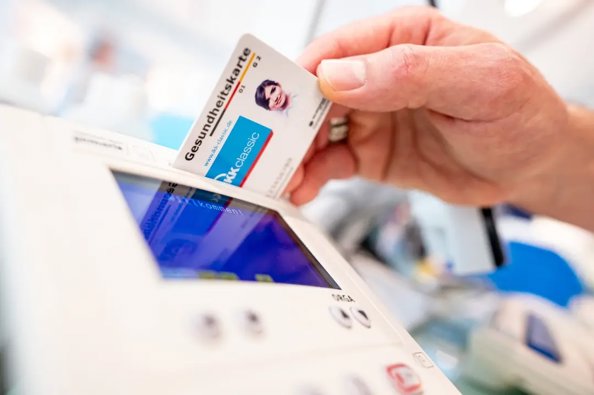
Germany Mandates Electronic Patient Records from Oct 1
Starting October 1, German health providers are legally required to use the electronic patient record (ePA), though patients may opt out.
Germany has flipped the switch on a major piece of its digital-health overhaul: as of October 1, 2025, physicians’ offices, hospitals and pharmacies are legally required to work with the country’s electronic patient record, or ePA. The move follows regional pilots and a springtime nationwide rollout period; from today, using the system is no longer optional for providers, though patients can still opt out.
Around 70 million people in statutory health insurance have had an ePA automatically created since January—unless they objected—making the platform available to the vast majority of insured Germans. The opt-out design, officials argue, is critical to scale the network effect that makes shared clinical data useful at the point of care.
What the Mandate Actually Requires
Beginning today, doctors and other clinical professionals are expected to read from and upload to the ePA as part of routine care. In practical terms, that means key documents—discharge summaries, physician letters, medication lists and core findings—should be placed in the electronic file so they are viewable by the patient and, with permission, other treating teams. The legal basis stems from the federal Digital Act and changes to Germany’s Social Code; non-compliance can trigger sanctions beginning in 2026.
The government’s timeline was staged by design: the ePA for All program started in model regions in January, opened nationally in late April to allow practices and hospitals to prepare, and now culminates in a provider duty from October 1. Patients, by contrast, remain free to decline or delete their records at any time.
Consent, Control, and the 90-Day Access Window
Germany’s ePA is patient-controlled. When a patient inserts their electronic health card (eGK) at check-in, the treating practice or hospital receives a standard 90-day “treatment context” to view and file documents. Patients can shorten, extend, or revoke that window via their insurer’s ePA app; each access is recorded in an audit log visible to the patient. The Health Ministry also stresses that insurers cannot read the contents of the ePA.
Readiness Check: Practices Are Largely Equipped; Hospitals Lag
In the ambulatory sector, technical readiness is high. More than 90% of physician/dental practices and pharmacies report they are technically equipped to use the ePA, according to the national digital-health agency gematik. That figure reflects delivery of the required software modules by most practice-system vendors.
Still, not all practices had their ePA module live by late September. The Federal Association of Statutory Physicians (KBV) warned that roughly 20% of practices were still waiting on vendor updates as of last week—an issue expected to ease as suppliers finalize releases this quarter.
In the hospital sector, the gap is larger. A flash survey by the German Hospital Institute (DKI) found that only 56% of hospitals had received the necessary hospital information system (KIS) update by mid-August. Vendors prioritized a small number of pilots earlier in the year, with broader deployments stepping up since May. Hospital groups caution that full operational use will take time as complex systems are upgraded and integrated.
What Patients Will Notice First
For most people, early changes will be subtle but useful:
- Discharge letters and medication lists should increasingly be available in one place, improving handoffs between primary care, specialists and hospitals.
- If you haven’t opted out, your record already exists; you can use your insurer’s ePA app to review documents, adjust access, or hide sensitive entries.
- Expect incremental growth in content: as providers integrate uploads into daily workflows, more test results and summaries will accumulate, reducing repeat exams and fax-based requests.
One immediate friction point is active patient uptake. While millions of ePAs were auto-created, relatively few people have registered in the apps to manage their files. Reporting ahead of the mandate cited about 1.5 million app sign-ups; other industry voices put the figure closer to 3 million. Either way, engagement remains modest—for now.
Private Insurance: Voluntary and Patchy
Germany’s private insurers are not bound by the same auto-creation rules. Participation is voluntary, and as of this week only 5 of 36 private companies offer an ePA app, according to national reporting. Private plans provide access via their own app workflows (including an online check-in to pass the insurance number), but coverage and timing vary by company.
The Data Footprint Is Growing—Fast
Even before the mandate took effect, provider use was ramping. By the end of September, physicians had uploaded roughly 25 million documents to the ePA, according to figures cited by the Ärzte Zeitung. The same reporting suggests a solid majority of practices had begun regular interactions with the system in recent weeks.
Gematik’s own dashboards show tens of thousands of practices opening at least one record in the prior week, reinforcing the trend that daily use is spreading beyond early adopters.
Why This Matters for Care Quality
Supporters frame the ePA as a safety and efficiency tool: fewer duplicate imaging and lab tests, quicker access to histories in emergencies, and better medication reconciliation—particularly valuable for older patients with multiple chronic conditions. The audit trail and fine-grained consent are designed to bolster trust while enabling information flow when it counts.
Critics, including some primary-care leaders, say the system still has “teething troubles”—slow document viewing/upload speeds and uneven vendor performance—creating friction at the front desk during the respiratory-virus season. Policymakers acknowledge the learning curve but argue the workflows will normalize as software stabilizes and teams get comfortable.
What’s Still Hard for the System
Hospitals’ complexity is the standout hurdle. Integrating ePA workflows into multi-system environments—oncology, imaging, lab, emergency—requires both vendor updates and change management. The hospital federation says this reality was underestimated relative to the more uniform setups in outpatient practices. Expect a staggered ramp through 2026 as KIS modules land and on-site teams adapt.
Public communication is another weak spot. KBV surveys and industry commentary point to low awareness among patients and a burdensome onboarding process, especially for older adults who struggle with app setup and identity verification. Insurers are being pushed to simplify messaging and support, which could unlock the next wave of app activations.
Private-sector coverage will likely remain uneven for some time. Because private insurers are not compelled to auto-provision records, availability depends on each company’s app readiness and member communications. For now, private patients should check their plan’s ePA status directly.
How Germany Got Here: The Timeline at a Glance
- January–February 2025: Auto-creation of ePAs for statutory insureds; model regions go live first. Patients can opt out at any time.
- April 29, 2025: National rollout for providers to begin using the system in practice and hospital settings.
- October 1, 2025: Mandate starts for physicians, hospitals and pharmacies to use the ePA in routine care.
- 2026: Sanctions for provider non-use begin, according to insurer guidance summarizing the Digital Act changes.
Do I, as a patient, have to use the ePA?
No. It’s opt-out for those in statutory insurance; you can delete your record or hide individual documents at any time via the app. Private-insurance participation is voluntary and varies by insurer.
Who can see my information?
Only you and the providers you authorize. Insurers cannot view your record’s contents. Every access is logged in your app.
How long can a clinic see my ePA once I consent?
By default, inserting your eGK at check-in opens a 90-day access window (the “treatment context”). You can shorten, extend, or revoke this window in the app.
Are practices and hospitals actually ready?
Most practices are technically equipped, but some are still activating modules. Hospitals are catching up, with only 56% having received the key KIS update by mid-August. Expect a phased ramp through 2026.
How widely is the system being used already?
By late September, physicians had uploaded roughly 25 million documents; gematik reports rising week-over-week record opens in tens of thousands of facilities.
The Bottom Line
Germany is attempting something most advanced health systems still wrestle with: a nationwide, patient-controlled clinical record that providers are obliged to use. The policy logic is straightforward—scale the network, reduce friction, and let information follow the patient. The operational reality is messy—uneven vendor readiness, hospital complexity, and low early patient engagement.
If past digital-health rollouts are a guide, the next six to twelve months will determine whether the ePA becomes an invisible backbone of routine care—or another app people download and forget. For now, the mandate sets a clear expectation: document once, share when needed, and let patients decide who sees what.
Source: AerzteZeitung.de Gematik BMG AOK PKV KBV - Startseite Deutsches Krankenhaus Institut






